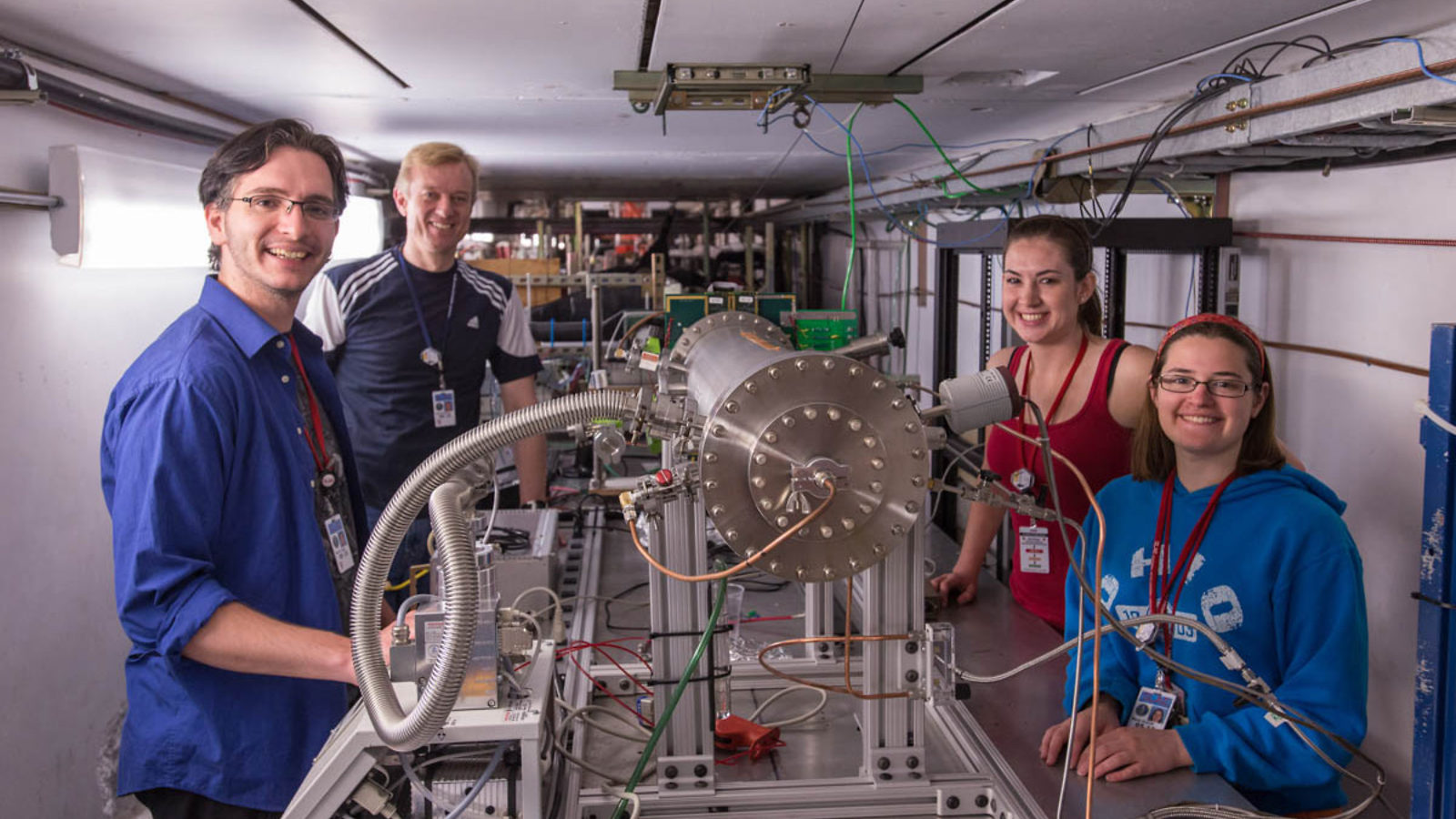In nature, quarks don’t seem to like being alone. They bind together with other quarks, and only the most powerful particle accelerators have the energy to even temporarily break them apart. To understand elementary bits of matter such as these, physicists need advanced particle accelerators—and advanced particle detectors.
A team of physicists from Stony Brook University led by Thomas Hemmick is doing its part to design the next generation of sensitive detectors. They recently brought a prototype to SLAC National Accelerator Laboratory to try it out in the laboratory’s new electron beam test facility.
The prototype detector is destined for an experiment at a proposed electron–ion collider. It will help identify particles spewing from collisions and let researchers peer more closely into the nuclear hearts of atoms as they try to better understand the force that holds quarks so tightly together.
SLAC’s End Station A Test Beam Facility delivers high-quality electron bunches at a rate of up to five times a second. This allowed the Stony Brook researchers to study how well their prototype could stand up to the harsh radiation environment of an active accelerator.
Klaus Dehmelt, a detector physicist at Stony Brook, says the electron beam is well suited to testing the group's detector. "SLAC can give us one electron at a time, so we could do a proof-of-principle experiment with clean data," he says.
The detector they brought for testing is known as a ring-imaging Cherenkov detector, or RICH. This type of detector is not new—an early version was used by the DELPHI experiment at CERN's Large Electron Positron Collider beginning in 1989—but the prototype Dehmelt's group tested had a few technical improvements that should make the detector more robust.
When a charged particle plows through the gas in a RICH detector—in this case, tetrafluoromethane gas—it disrupts the gas' electromagnetic field, pulling electrons out of place. As the disturbed electrons relax back into their proper energy levels, they give off their excess energy in the form of Cherenkov radiation, photons that spray out behind the particle in the shape of a cone. The intersection of that cone with the plane of the detector is focused into rings, which is how the detector got its name.
With the data gathered by the detector, researchers can measure the angle between the outer edge of the light cone and the path of the particle. This angle is directly tied to the particle's velocity. Once scientists know the velocity, along with other information, they can determine the mass of the particle—and thus its identity.
The RICH captures information about the photons of Cherenkov light by converting their energy into electrical signals, but the signals need considerable amplification. Traditionally, this has been supplied by photomultipliers; but they can be finicky, fragile and subject to false signals.
To combat this, the prototype tested at SLAC uses a customized device called a gas electron multiplier, or GEM, to detect the photons, boost the signal and pinpoint the locations of the incoming particles with greater resolution. Also undergoing testing was the detector mirror, which uses a special coating optimized to reflect the wavelength of the emitted Cherenkov light.
The group found that their prototype offered a better signal than traditional RICH detectors, in addition to being less expensive and easier to manufacture.
"It's the first time a GEM like this was used for a ring-imaging Cherenkov detector—and it worked," says Dehmelt. "We saw our first rings 30 to 45 minutes after we started taking data. We were jumping around" with excitement.



